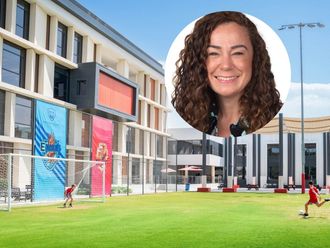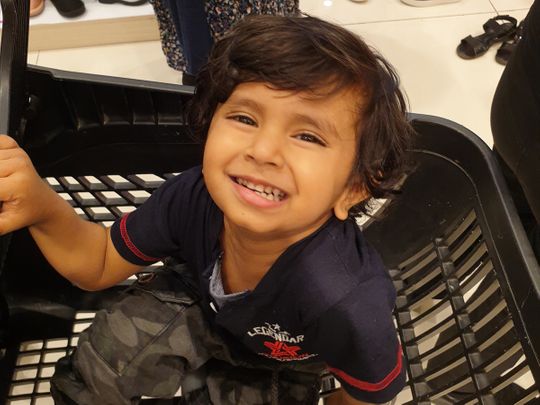
Sharjah: Mohammed Khaleel, at three-and-a-half years of age, is one among hundreds of thousands of toddlers his age.
Khaleel, whose parents are expats from Kerala living in Sharjah, stands at risk of lifelong pain from surgeries and fractures, a deformed leg, or even losing his affected limb.
Simi Najas, Khaleel’s mother, has appealed for help so Khaleel can walk and play as he should at his age. He suffers from congenital pseudarthrosis of the tibia (CPT) in his left leg. His leg can only be saved if Simi and her husband Najas can come up with $97,000 – Dh356,000.
What is CPT?
According to the US National Library of Medicine, CPT is “a rare pathology, which is usually associated with neurofibromatosis type I.”
A pseudoarthrosis is basically a ‘false joint’ - a joint formed by fibrous tissue bridging the gap between the two fragments of bone - formed due to a fracture that has not united. This then results in bowing or more fractures in the affected tibia. The bone has a low growth rate and is very prone to repeat fractures.
Currently, the etiology of CPT has not been completely understood. It remains one of the most puzzling conditions in pediatric orthopaedics worldwide.
CPT only occurs as one in 140,000 to 250,000 cases worldwide. The condition usually becomes evident within a child's first year of life – as was the case with Khaleel.
“The tibia is most frequently affected site. It develops as anterolateral [anterior and lateral – from the front and the sides] bowing in the tibia which progresses to fracture and pseudoarthrosis”, Dr. Ajith Jose, Specialist Orthopaedics, Aster Hospitals – Al Qusais, who is not involved in Khaleel’s case, told Gulf News in an email interview.
Some CPT cases could be because of neurofibromatosis – your nerves don’t grow or repair as required, and tumours develop on them. However, when there is no proven neurofibromatosis, there is no ascertained cause for CPT.
A 2019 paper published in Orphanet Journal of Rare Diseases says, “Currently, the etiology of CPT has not been completely understood. It remains one of the most puzzling conditions in pediatric orthopaedics worldwide.”
Surgical treatment alone is rarely successful and even when bone healing seems to be obtained, new fractures can occur as a part of the condition. Papers published on the condition reiterate that parents could be recommended amputation and the use of a prosthetic limb after a third failed attempt at surgery to pursue a normal life.
Simi, Khaleel’s mother, could not resign herself to that option – she wanted her child to be able to play, walk, run like any other child his age. And now, with her continuing constant research, Simi found someone who promised her what no one else had – a normal life for her son.
First diagnosis
At 10 months of age, Khaleel sustained an accidental injury to his foot. A young girl, the daughter of a family friend, had stepped on his tiny feet by accident.
When the baby’s pain from the simple injury did not reduce even after a week, Simi started getting worried. In addition to this, as she massaged the baby with oil before his daily bath, she noticed what felt like strange bony projections on his leg.
“I couldn’t neglect it, it seemed very strange,” Simi said in a phone interview with Gulf News.
When the couple headed to the doctor for their usual visit (Khaleel has club foot disease on his right leg which was being treated), she brought it up.
“The doctor said it’s okay, don’t get worried, but we insisted on an X-ray,” she recalled. “That’s when we came to know [of] this shocking thing,” Simi added. “[The] doctor said there was nothing he could do for it here.”
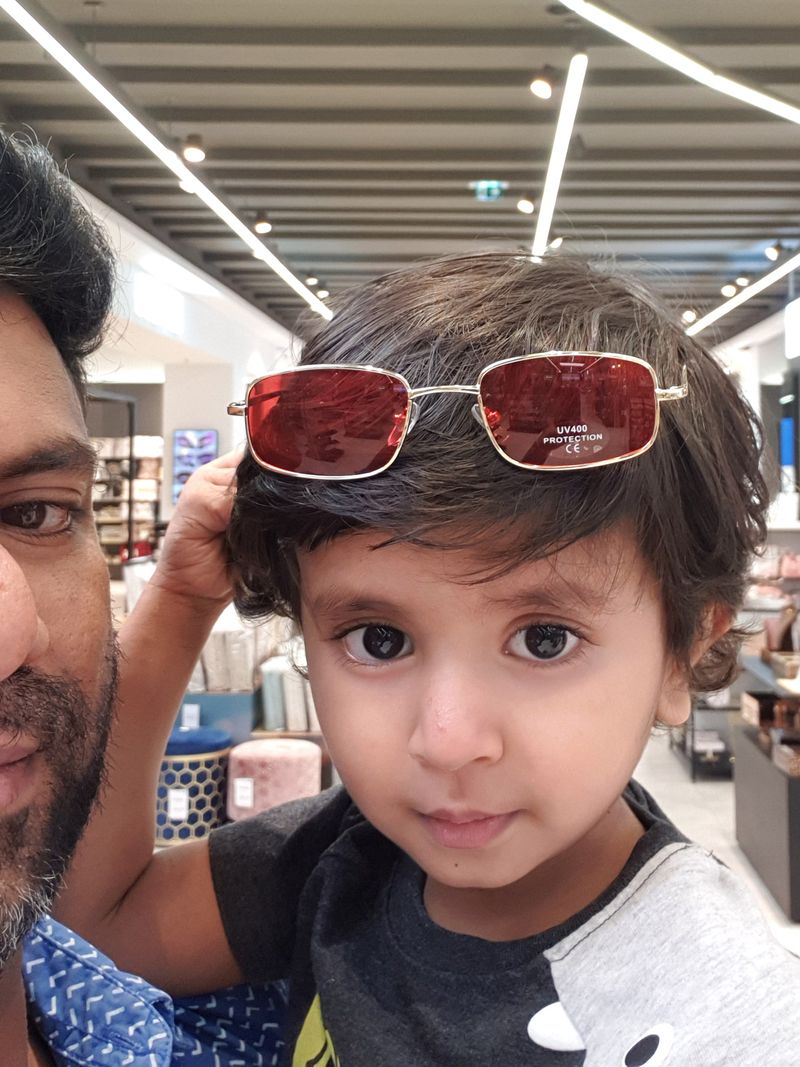
Frantic, the 34-year-old started searching online to learn everything she could about the condition and about possible treatments. Calling up specialists at hospitals in the UAE and in India, no one gave her what she needed – an assurance that the condition could be treated.
“In some of the hospitals, they hadn’t even had one case [of CPT],” she said.
A ray of hope
Afraid to lose hope, Simi continued her research. The homemaker came across a news story about a mother in the UAE, like her, with a daughter who had CPT - Kelly Rees-Caldwell and daughter Jasmine Ammari.
35-year-old Kelly, an expat in Abu Dhabi, found out about her daughter’s condition at birth, in 2011. “She was my first-born and I couldn’t accept the diagnosis,” the mother-of-three told Gulf News over the phone. The couple was even told to agree to amputation during the first month of the baby's life.
“We flew to the UK with Jasmine, to meet with a specialist orthopaedic doctor,” she recalled. However, the couple left feeling hopeless – their doctor had only seen two cases of CPT in his long career.
The Dubai specialist who diagnosed the condition assured the couple that a surgery would help and having no other option, Kelly agreed. Unfortunately, the surgery was a failure and baby Jasmine had a horrific ordeal, according to Kelly, where she had a major fracture which pierced through her skin.
“We were devastated, we were certain she would have to lose the leg,” she said.
That was until Kelly found one doctor in America, someone who had worked on over 100 such cases, which is extraordinary given how rare the condition is. Dror Paley, founder of Paley Institute in West Palm Beach, Florida, according to the website of the centre, is a specialist in limb lengthening and reconstruction.
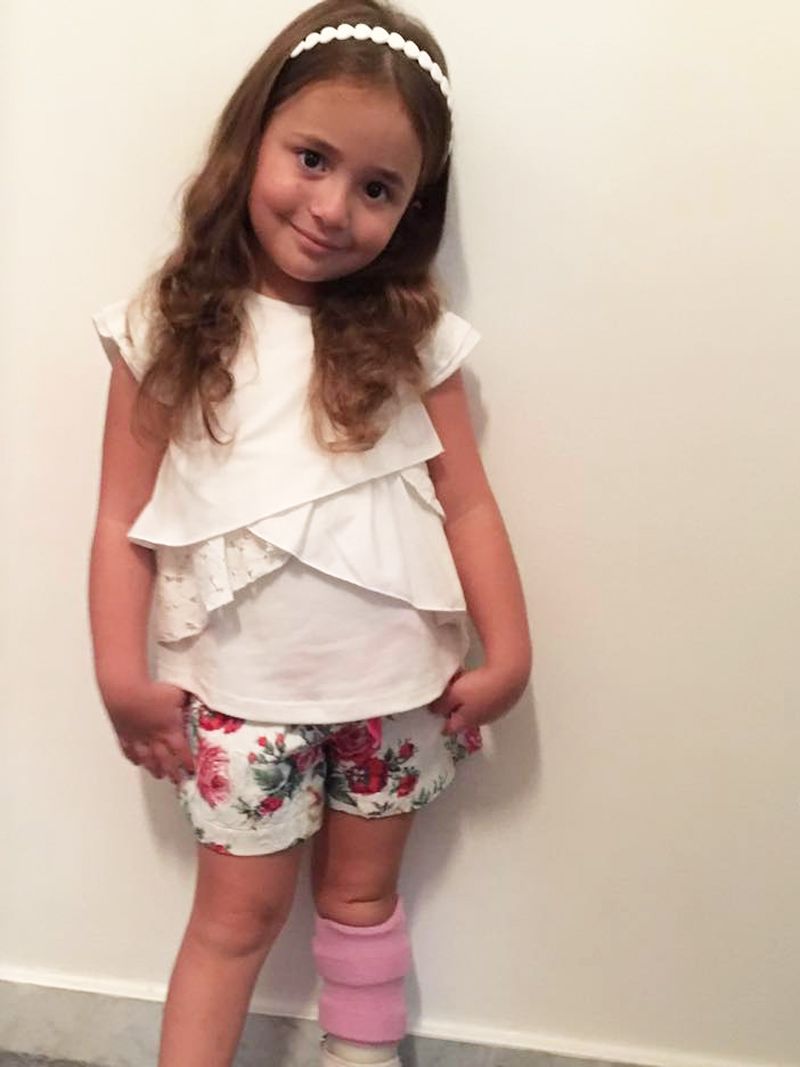
The company where Mr Ammari worked helped the couple out by loaning them a major chunk of the money needed. They flew to Florida and got the surgery done when Jasmine was 18 months old, in 2012 – a metal rod was placed in her leg, which was successfully replaced in 2015 as she grew. She has had over six surgeries but the story is one of hope and survival.
Today, Jasmine is eight-and-a-half years old and she walks without a support brace at home. "I can't thank him [the doctor] enough," Kelly reiterated. Her story, over seven years later, was what gave Simi hope.
“She [Kelly] helped me so much,” Simi said. She also joined a Facebook support group of other mothers with children suffering from the rare condition, many of whom were the same doctor’s patients.
With Kelly’s help and suggestions from the group, she got in touch with the doctor and he promised 100 per cent success, Simi said. There was a caveat though – the operation and post-op care could only be done in America, or in Poland where the doctor consults a few times a year.
He wants to play, he wants to run around – but after doing that, the pain is so much that he spends a couple of days crawling.
Why is treatment so difficult?
“Since it [CPT] is so rare, many orthopaedic specialists have never come across more than one or two CPT cases,” Dr Sanjay Kumar Sureen, Specialist – Orthopaedic at Prime Hospital in the UAE, who is also not involved in the case, told Gulf News in a phone interview.
“There is no union between bone fragments due to fibrous growth between them, this is due to neurofibromatosis or abnormal nerve growth,” he added.
Dr. Jose added, “Failure rate of treatment is decreased with the modern treatment modalities, but still attaining a union and maintaining it in a CPT is a difficult thing.”
Maintenance of the ‘union’ – the normal re-healing of bone fragments – in the affected tibia is even harder and may require a combination of corrective surgeries, bone-lengthening procedures (the growth of the bones is slower than the other leg), physiotherapy and monitoring - at least until the patient is at skeletal maturity, usually 15 years old.
A promise of success
A major part contributing to her new-found doctor’s success rates and the price of the surgery, Simi claims, is a BMP infusion that he gives patients before the surgery.
“Bone Morphogenic Protein, that’s BMP, is a synthetically produced protein that human bodies normally produce in case of fractures,” Dr Sureen, one of our local experts who is not connected to this case, said.
“Literature has shown that these injections or infusions do help in re-union [of bone fragments],” he added.
However, Dr Sureen said that BMP is not available in the UAE and while it can be imported to India from America, it is very expensive to do so and insurance doesn’t cover the price. Even with it, he opined, success rates are dicey, unless the surgeon is a specialist.
Other expensive elements include a Zoledronic Acid intra-veinous injection (which is used to treat osteoporosis) , the metal implants used etc. along with procedural and logistics' costs involved in making the surgery happen.
Help from others
A lot of people have helped young Khaleel and family in ways they could.
When we met Simi at her home in Sharjah, where she lives with her husband and two kids, she said, “He goes to school for free at the Emirates National School, due to the kindness of Ravi Thomas [the school principal].” The couple also have an older daughter, a grade-4 student.
Najas’s employer Icon Engineering Services said, according to the couple, that they would also try their best to help, but an update on this is yet to come.

Simi’s relief at finding the doctor who was a specialist of the condition was short-lived.
The final bill given to Simi by the doctor was $97,000, around Dh356,000 – this includes the all-important BMP infusion, the surgery and limited post-op procedures. Simi and Khaleel would also have to stay in Poland for around 12 to 16 weeks post-surgery, as per the doctor’s instructions, to ensure proper union of the bone.
What next
Simi is looking forward to meeting the two people who gave her hope when she had none – Kelly and her daughter Jasmine. “I can’t wait to see Jasmine,” Simi laughed. The mothers will meet in December in Abu Dhabi.
Khaleel, played with his cars and walked around as we spoke, but you could tell he was aware that we were talking about him. A shy playful kid, he wears a supportive stent on his affected left leg which helps him walk and is replaced every six months.
“He wants to play, he wants to run around – but after doing that, the pain is so much that he spends a couple of days crawling,” father Najas said.
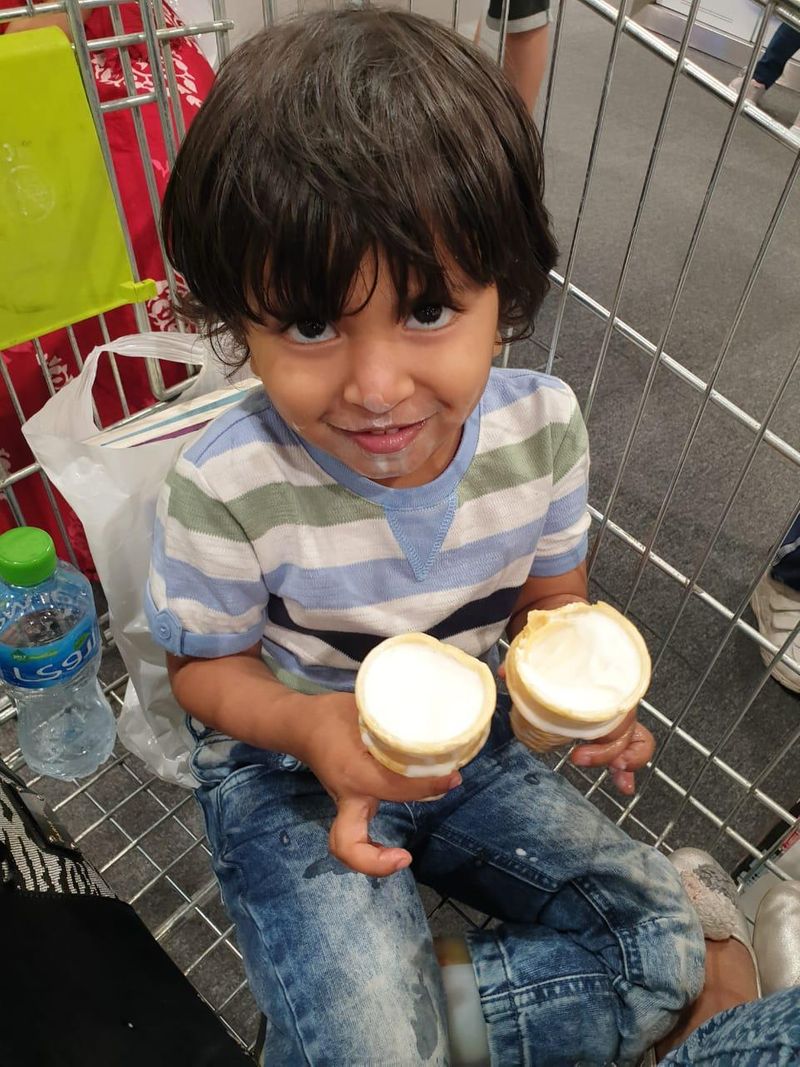
“We even avoid some events, because he is now at an age where he understands and he could feel bad about it [the condition] if he can’t play as much as the others”, Najas added.
The skin on his leg also gets irritated from the constant contact with the device that is only removed before his daily bath. “But he never complains,” Simi gushes taking Khaleel on to her lap. However, as his age progresses, time is running out for correcting his leg.
If the family can get the money required, Simi wants her son to undergo the surgery in April 2020 in Poland – which is one of the windows during which the doctor consults in Poland.
Every day, Najas added, wife Simi is on a new venture, talking to people, trying to get help.
“We are a middle-class family, but I can’t bear that my son will not get the treatment he deserves, just because we didn’t have the money,” Simi said.
This is a Reader Story. If you'd like your story to be told or want to contact Gulf News for reader complaints or feedback, please email readers@gulfnews.com




